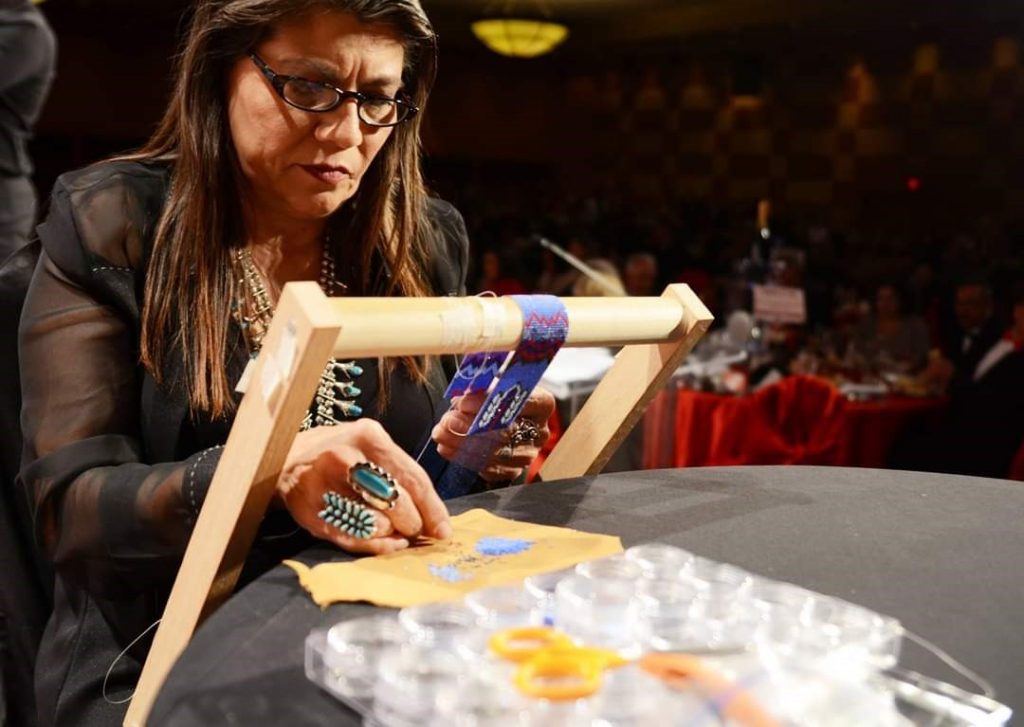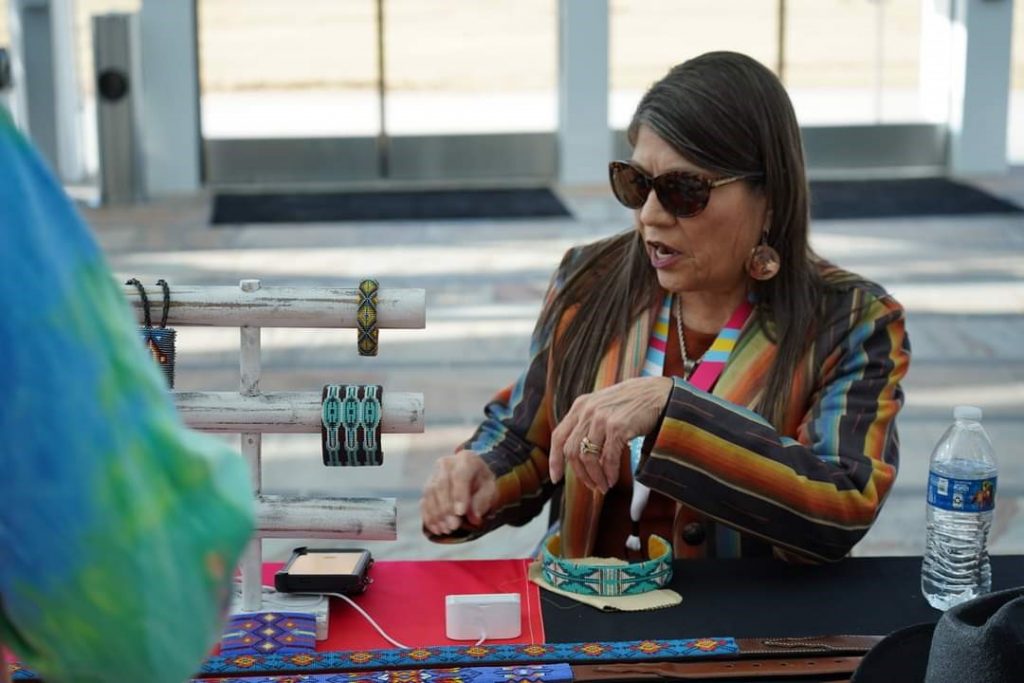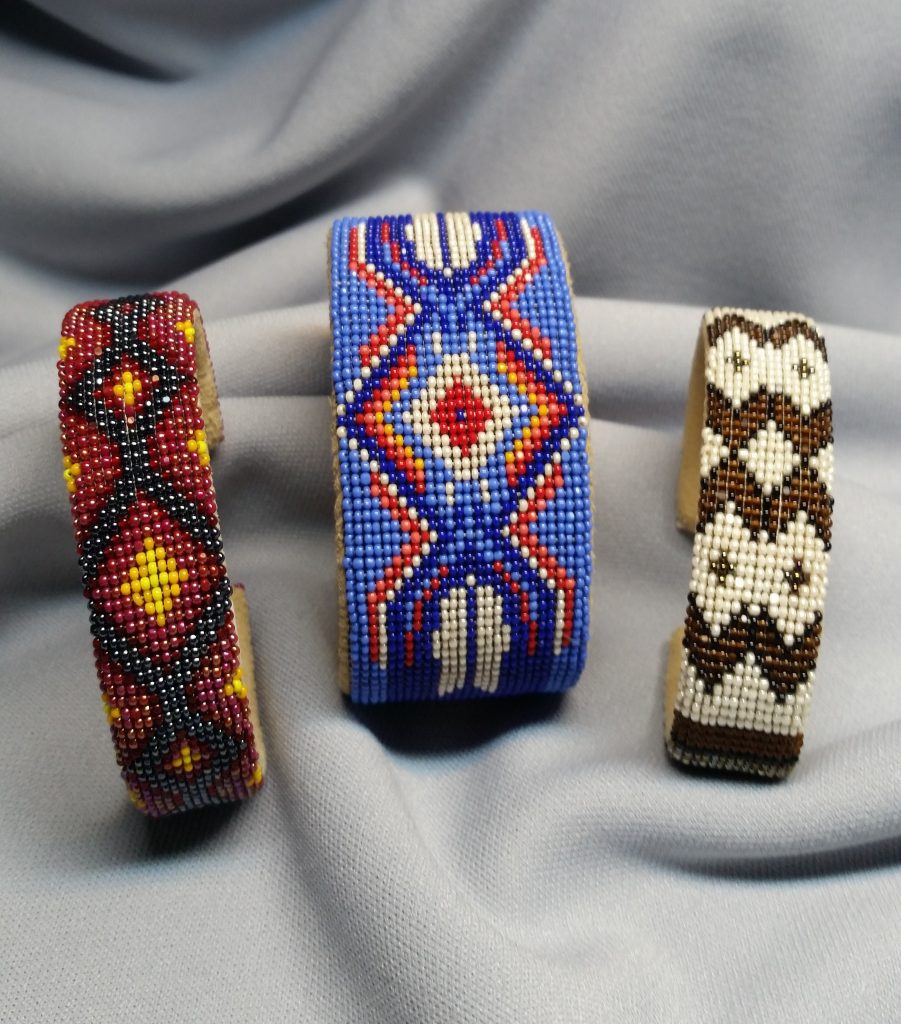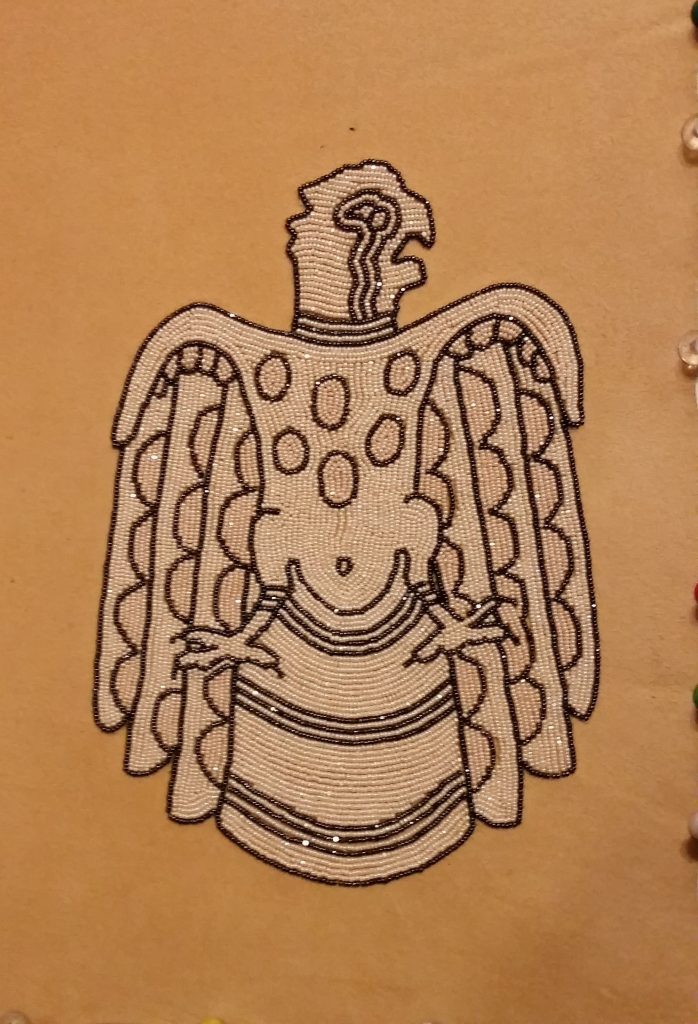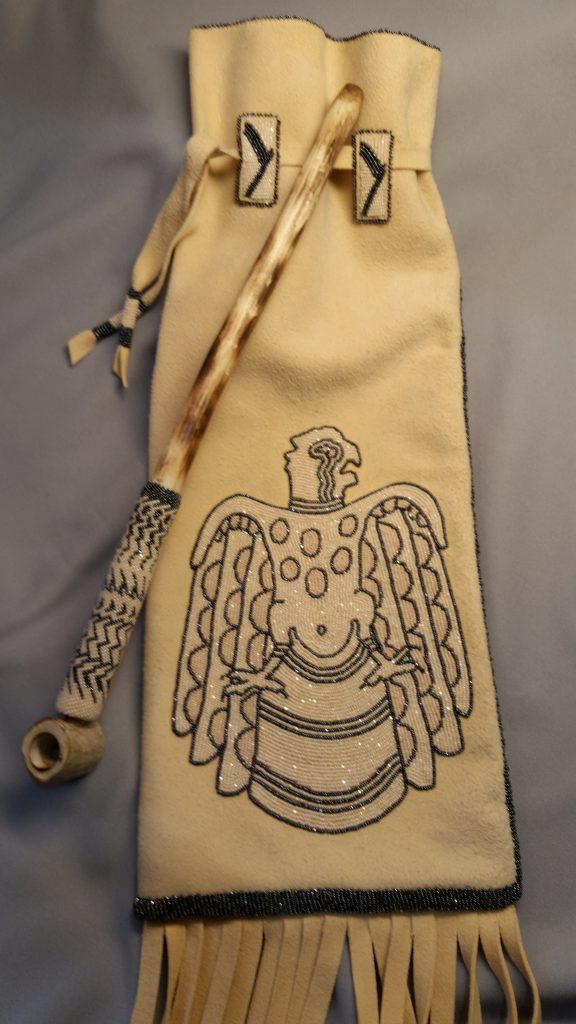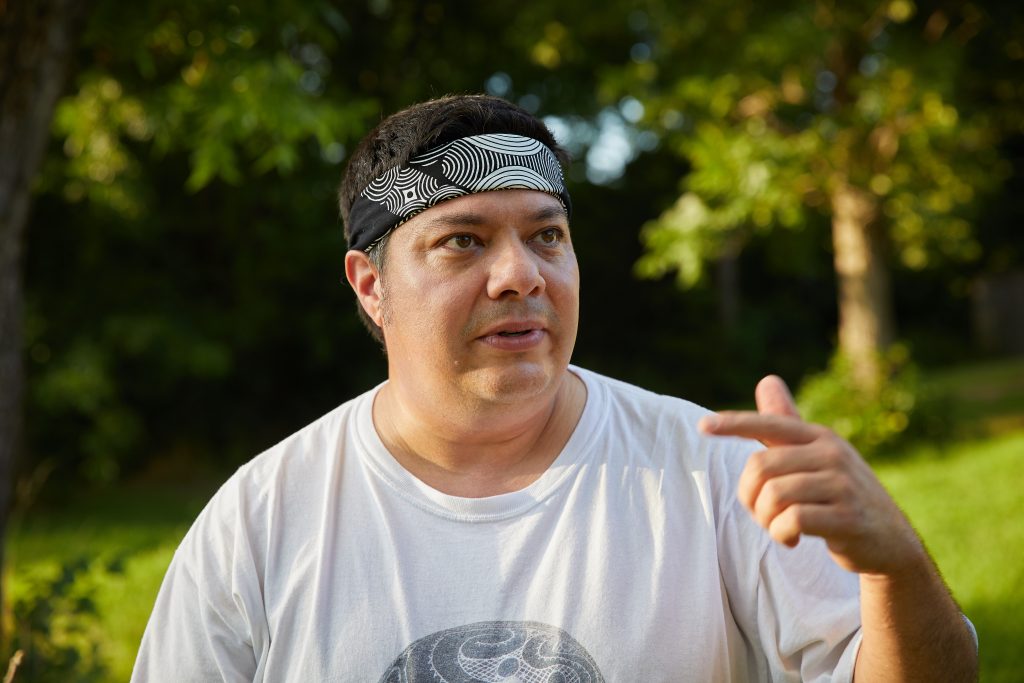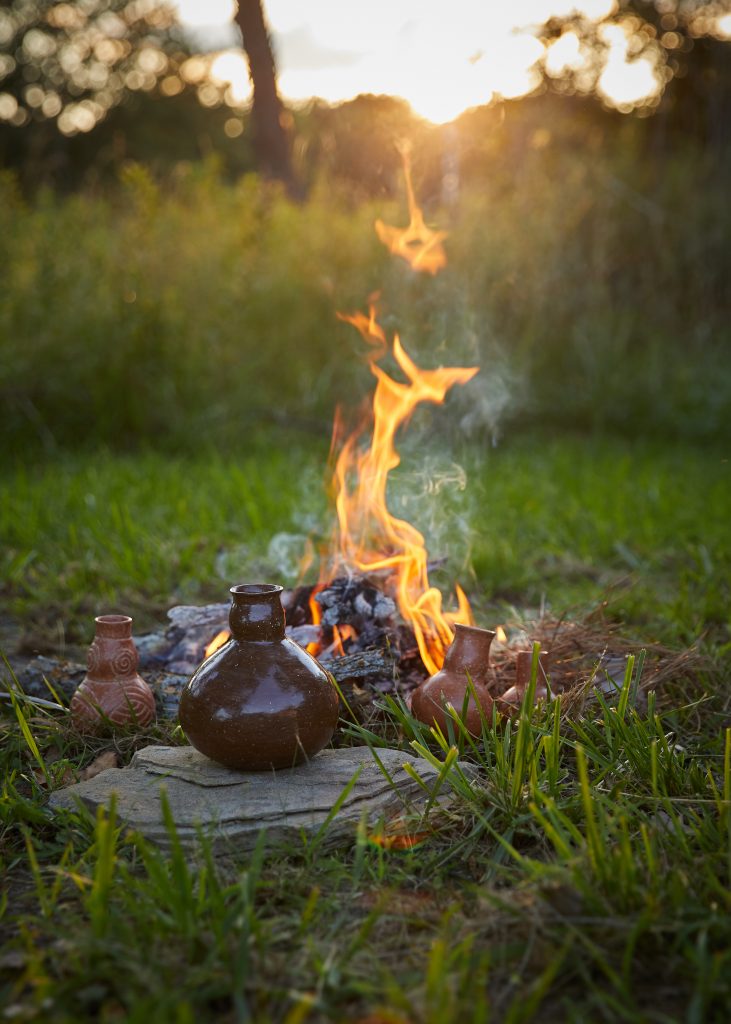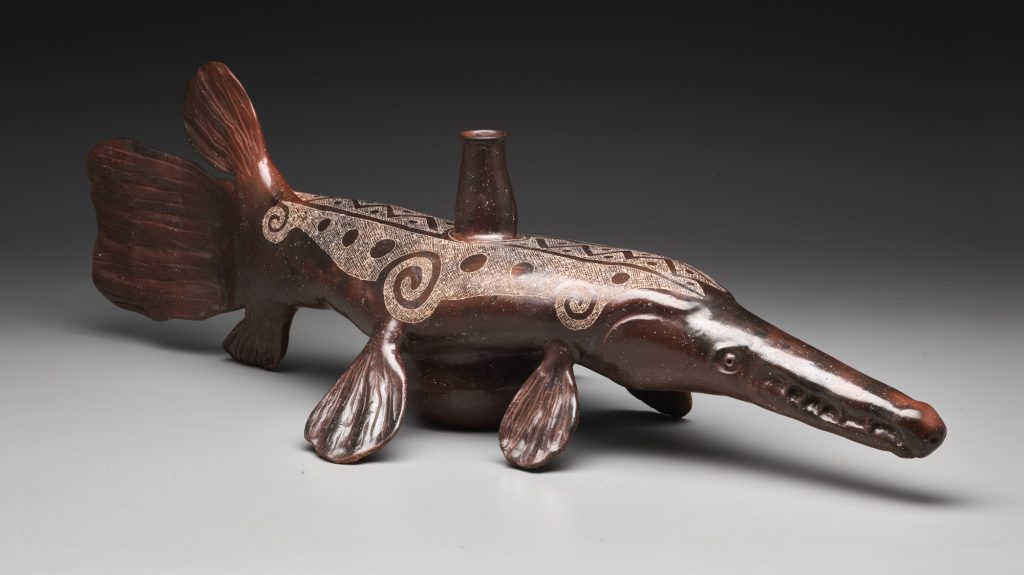For over a thousand years, Caddo peoples lived, traded goods, made art, and grew crops in communities clustered around rivers in present-day Texas, Louisiana, Arkansas, and Oklahoma. They, like other Mississippian peoples, constructed earthen mounds that marked and shaped their landscape for political and ceremonial purposes. You can visit and learn more about three of those mounds at the Caddo Mounds State Historic Site in East Texas.
Colonization and colonialism dealt blow after blow to the Caddo, with epidemic diseases, forced removals to reservations, and the boarding school system all threatening the continuation of knowledge within Caddo communities. Many traditions survived through the concerted efforts of Caddo knowledge keepers, and others, though disrupted, have now been revived and revitalized through the work of contemporary artists and other cultural practitioners.
Among those artists are brothers Chad “Nish” Earles and Chase Kahwinhut Earles and their father, Wayne “Tay Sha” Earles, all of whom have artworks featured in Spirit Lodge: Mississippian Art from Spiro (on view through August 7, 2022).
Academic and professional experience in art and graphic design, a background in graffiti art, and deep engagement with Caddo history and traditions have all shaped Chad’s art. These varied influences are visible in his piece in Spirit Lodge, Tah-Nah-Hah “Buffalo,” a hand-painted skateboard deck featuring his characteristic bold lines and creative use of negative space.

Chase’s Batah Kuhuh alligator gar fish effigy bottle, acquired by the DMA in 2020, welcomes visitors into the exhibition. After its acquisition, Chase and Dr. Michelle Rich, the DMA’s Ellen and Harry S. Parker III Assistant Curator of the Arts of the Americas, had a conversation about his ceramic practice, which can be found here.
When you enter Spirit Lodge’s galleries, you’ll find not one, not two, but three additional works by Chase—two more of his ceramic vessels and one collaboration with Muscogee painter Starr Hardridge. The intricately incised designs on many of Chase’s pieces, as seen on Deé-Tumbah Kah’-Wis above, reflect his own spin on motifs used by pre-contact Caddo potters. Jeri Redcorn, the Caddo pottery revivalist, helped him start working in uniquely Caddo styles.
Inspiration isn’t only flowing from the older generations to the younger though—while Wayne had loved art since he was a child, his interest in stone carving was sparked by going to art shows with his sons (and some encouragement from Chase and Chad!). The stunning ceremonial weaponry featured in the exhibition is a testament to his rapid mastery of the art form. And there’s an extra layer of family connections—Wayne’s ceremonial mace shares a title with Chad’s skateboard deck, and his monolithic axe—like Chase’s effigy bottle—is in the shape of a gar fish.

Right: Monolithic axe (P-i-ta-u-ni-wan’-ha—To Have Power), Wayne “Tay Sha” Earles, Caddo, 2018. Stone. National Cowboy & Western Heritage Museum, 2019.34.2
Join us for the Late Night event on March 25 to see Chad along with the Caddo Culture Club exhibiting traditional Caddo dances, Chase demonstrating his potting, and many other artists and knowledge keepers sharing their expertise. And of course, come experience the Earles family’s incredible art in person in Spirit Lodge: Mississippian Art from Spiro!
Becca Merriman-Goldring is the McDermott Intern for Arts of the Americas at the DMA.

